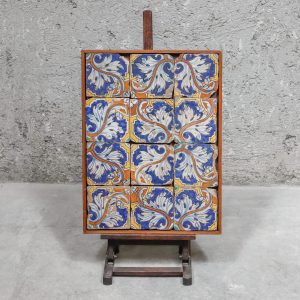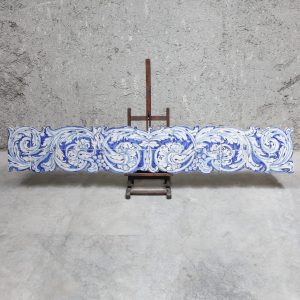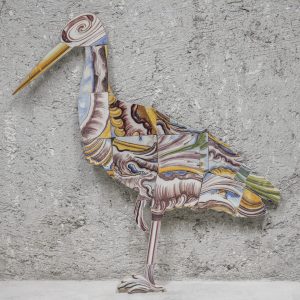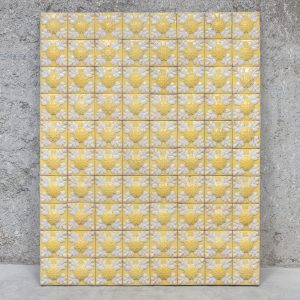‹
›

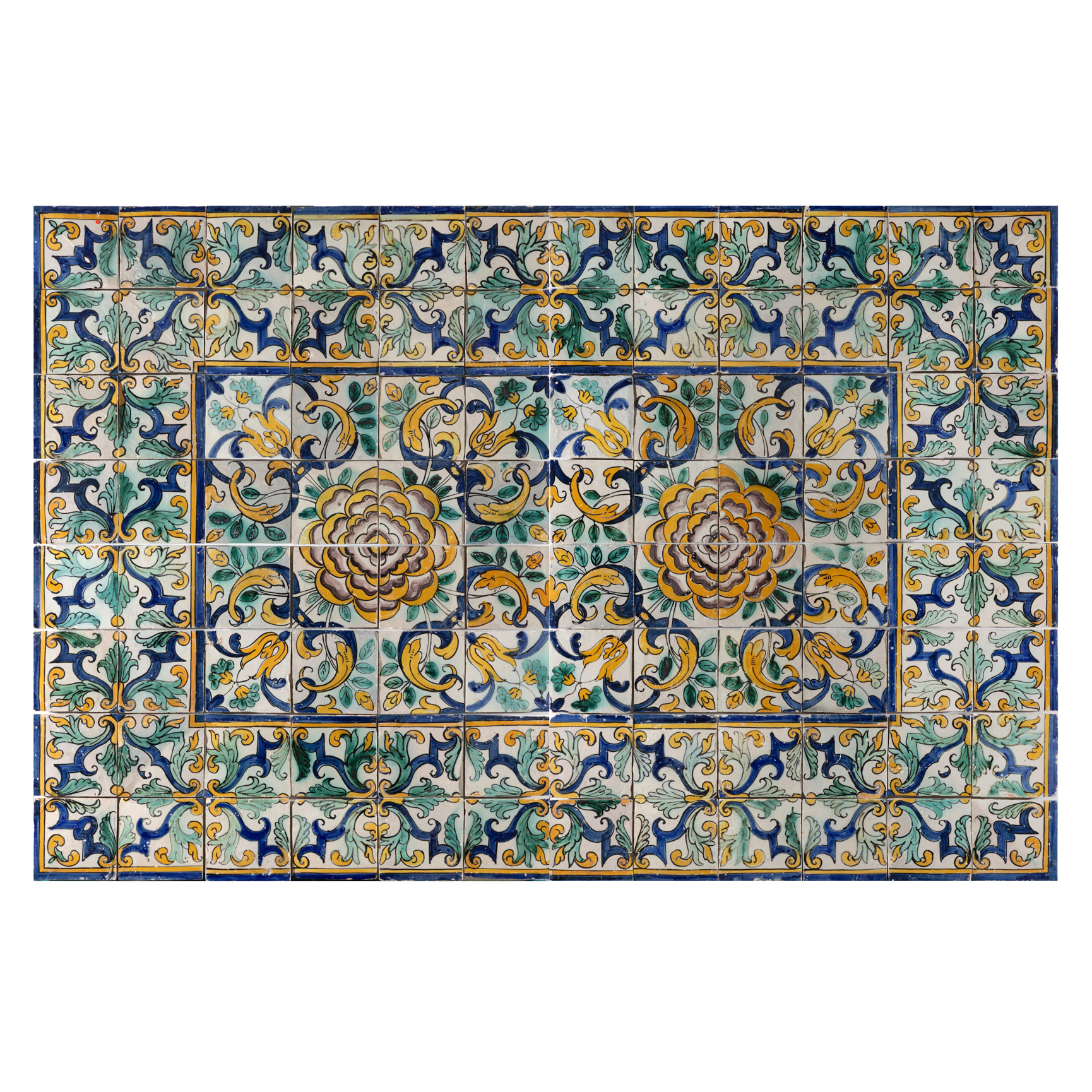
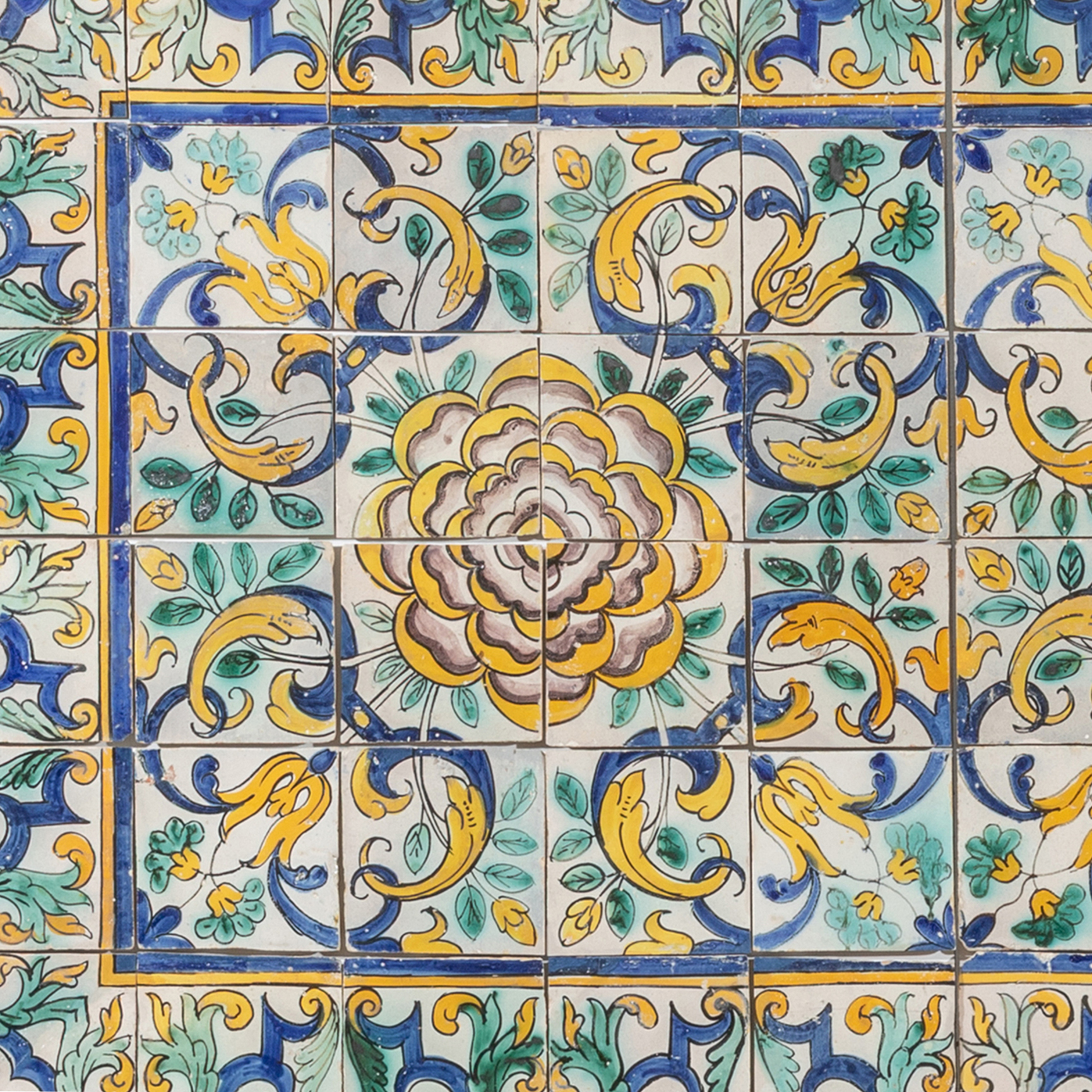









›
‹
×
![]()
Tile Composition – ‘Camellia’ Pattern
Period: 17th century .
Dimensões: 288 cm × 198 cm (113.39 in × 77.95 in)
17th-century panel in yellow, blue, and white, along with other colors that highlight its rarity and uniqueness, such as green and manganese. The tile panel features the Camellia pattern, one of the characteristic designs of Portuguese Baroque tilework, directly inspired by decorative motifs from Ming Chinese porcelain.
This pattern stands out for its modular repetition of floral forms, with the stylized camellia taking center stage, surrounded by vegetal elements and volutes. The symmetrical composition provides visual balance to the whole, reflecting the influence of the decorative trends of the time, inspired both by Islamic tradition and Italo-Flemish influences.
The chromatic richness and ornamental dynamism of this panel reflect the sophistication of Portuguese workshops of the period, which had mastered the techniques of faience and majolica. The use of cobalt blue—one of the most prized colors in 17th-century tilework—contrasts harmoniously with golden and greenish tones, creating a vibrant and luminous effect. Moreover, the arrangement of floral and phytomorphic motifs suggests a connection to nature, a recurring theme in Baroque decorative art.
See: SANTOS SIMÕES, J.M., A Azulejaria em Portugal no século XVII, tomo I, FCB, 1971, pp. 91-92 (P.472)
Are you interested in this product?
